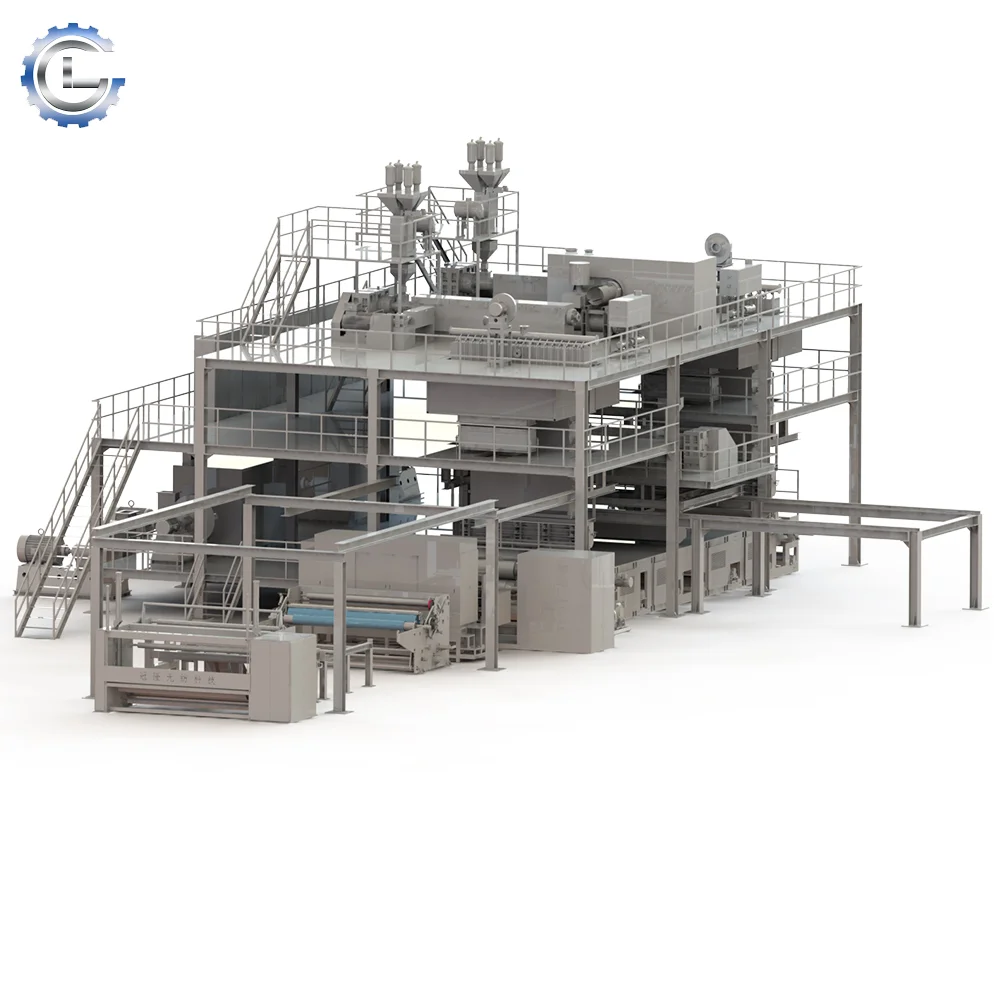The past decade has been witness to remarkable changes in the textile industry with the advent of spunbond nonwoven fabric machines at the center of the shift. The high-performance and efficient capability of these machines have indeed allowed for the development of fabrics that, apart from other applications, also apply to the disposable health and hygiene industry as well as the medical, PPE, and industrial textiles.
Glnon Woven Machinery is one of the biggest role players in the sector. The company is a leader in advanced cloth-making machine solutions development and export business. This article demonstrates the ways in which spunbond nonwoven machines are the wild cards and tells the case of companies going global, from Spuntech Industries Inc. – the emerging manufacturers are also in on the game.

What Is a Spun Bond Non Woven Fabric Making Machine?
A spun bond non woven fabric making machine is an integrated system that converts polymer granules (typically polypropylene or PET) directly into rolled nonwoven fabric. The process involves:
- Polymer Extrusion
- Filament Spinning
- Web Formation via Air Laying
- Thermal Bonding (Calendering)
- Winding and Slitting
Unlike traditional woven textiles, spunbond fabric is made without weaving or knitting, drastically reducing production time and cost.
Key Benefits That Drive Industry Adoption
1. High-Speed, High-Volume Output
Machines from companies like Glnon Woven Machinery can produce up to 600 meters of fabric per minute, allowing manufacturers to meet growing global demand for disposable and semi-durable textiles.
2. Eco-Efficiency
Spunbond processes reduce water usage and eliminate the need for chemical treatments. Many models also feature energy-saving drives and modular line designs.
3. Versatility in Applications
Spunbond fabrics are used in:
- Medical gowns, masks, and surgical drapes
- Diapers and feminine hygiene products
- Geotextiles and automotive interiors
- Agriculture and furniture linings
4. Cost-Effectiveness
As raw materials are melted and spun in-line, there’s less waste, fewer handling steps, and no need for additional weaving equipment—making it a more affordable alternative to woven production.
Glnon Woven Machinery: Driving Innovation in Fabric Production
Based in China, Glnon Woven Machinery provides full-service support to manufacturers worldwide. With over 20 years of experience, the company offers:
- Fully automated spun bond non woven fabric making machines
- Customizable cloth making machine lines with precision winding, slitting, and edge trimming
- On-site installation, staff training, and lifetime maintenance support
What sets Glnon apart is its focus on modular technology, allowing manufacturers to scale up quickly and adapt to shifting market demands—whether for hygiene-grade fabrics or industrial-strength materials.
Global Influence: The Role of Spuntech Industries Inc
While Spuntech Industries Inc—a major U.S.-based nonwoven producer—has long been a leader in hydroentangled and spunbond technologies, the global demand for nonwoven fabrics has encouraged even traditional players to adopt newer-generation machinery.
Manufacturers around the world are following suit, modernizing their plants with spun bond non woven fabric making machines to remain competitive and sustainable.
Future Outlook: Smart Manufacturing and Material Science
The next generation of cloth making machine technology is expected to incorporate AI-driven quality control, real-time defect detection, and hybrid layering capabilities. These advancements will further push the boundaries of what spunbond fabric can achieve, particularly in sectors like:
- Filtration
- Biomedical
- Eco-packaging
As the global market for nonwoven textiles surpasses $50 billion annually, investments in cutting-edge machinery like those from Glnon Woven Machinery will continue to grow.
